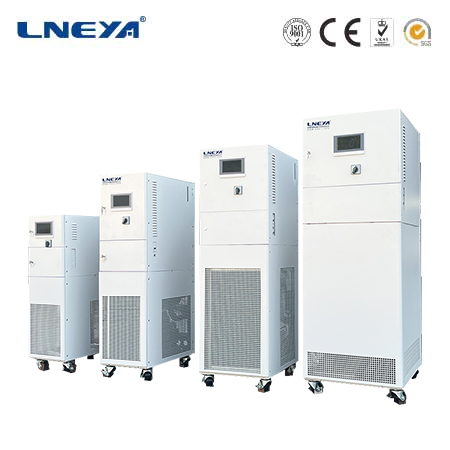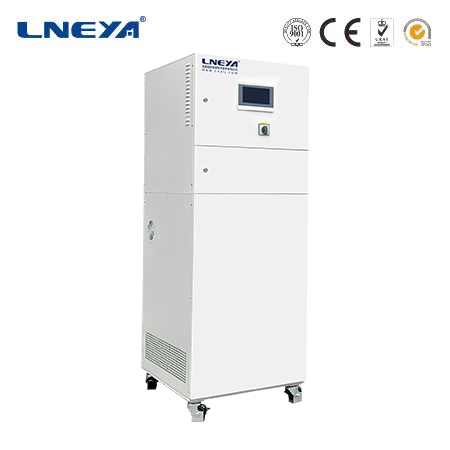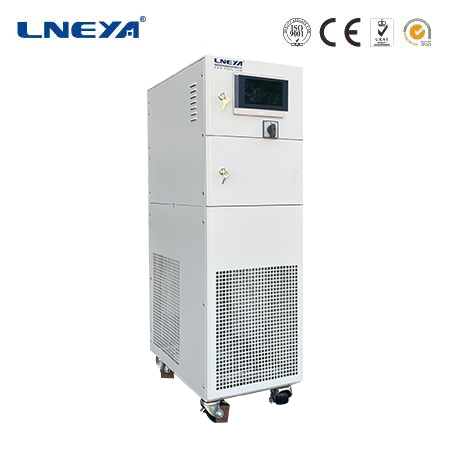water cooler with temperature control
A water cooler with temperature control is an advanced appliance that combines water dispensing functionality with the ability to adjust and maintain water temperature according to user needs. Unlike basic water coolers that only provide cold or room-temperature water without regulation, these models allow precise control over the cooling process, ensuring water stays within a desired range—typically 4°C to 12°C (39°F to 54°F) for drinking purposes, though some industrial models can reach lower or higher temperatures. This versatility makes them suitable for a wide range of settings, from homes and offices to laboratories and food service establishments, where temperature-specific water is essential for comfort, safety, or operational accuracy.

The key features of a water cooler with temperature control distinguish it from standard models, focusing on functionality, precision, and user convenience. Adjustable temperature settings are the defining feature, allowing users to set their preferred temperature via a dial, digital interface, or touchscreen. Residential models may offer a few preset options (e.g., 5°C, 7°C, 10°C), while commercial or industrial units provide a continuous range for fine-tuning.
Cooling mechanisms vary based on the cooler’s size and purpose. Most models use either compressor-based refrigeration—similar to small refrigerators—to achieve efficient cooling, ideal for high-capacity units in busy environments. Smaller or more energy-conscious coolers may employ thermoelectric (Peltier) cooling, which uses an electric current to create a temperature difference, operating more quietly and with lower energy consumption but at a slightly higher cost for comparable cooling power.
Safety and hygiene features are integral to these coolers. Many include UV sterilization to eliminate bacteria in the water tank, preventing contamination that could thrive in warm or inconsistently cooled water. Overheat protection shuts off the cooling system if temperatures drop too low, avoiding damage to components, while child locks prevent accidental temperature adjustments or water dispensing in households with young children.
Water storage and dispensing components are designed to work with temperature control. Insulated tanks keep water at the set temperature for longer, reducing the need for frequent cooling cycles. Dispensing nozzles are often ergonomically designed for easy use, with some models offering both push-button and sensor-activated options to minimize contact and maintain hygiene.
Water coolers with temperature control can be classified based on their intended use, capacity, and complexity. Residential models are compact, designed for home use, and typically feature basic temperature control (e.g., 5–10°C) with a small storage tank (2–5 liters). They are often countertop or freestanding, using thermoelectric cooling for quiet operation. Many residential coolers also dispense room-temperature water, with separate controls for hot water (in some models) and cold water, making them versatile for daily use—from cold drinks to instant coffee.

Commercial water coolers are larger, built to handle higher usage in offices, schools, or public spaces. They offer more precise temperature control (±0.5°C) and larger tanks (5–20 liters) to accommodate multiple users. Commercial models usually use compressor-based cooling for faster temperature recovery after frequent dispensing. They may include features like water level indicators, drip trays to catch spills, and durable exteriors to withstand heavy use. Some are plumbed directly to a water supply, eliminating the need for manual refills, and have adjustable temperature ranges (4–12°C) to suit different preferences.
Industrial and laboratory water coolers are specialized units designed for high-precision temperature control, often maintaining temperatures between 1°C and 10°C with tolerances as tight as ±0.1°C. They are used in scientific labs to supply temperature-stabilized water for equipment like spectrometers or incubators, in manufacturing to cool machinery, or in pharmaceutical facilities where water temperature directly impacts product quality. These coolers use advanced PID controllers, robust stainless steel tanks resistant to corrosion, and powerful compressors to handle large volumes (20–100+ liters) and continuous operation.
Smart water coolers with temperature control integrate connectivity features, allowing users to monitor and adjust temperature via smartphone apps or building management systems. They can send alerts when water levels are low, filters need replacement, or temperatures deviate from the set range. Smart models often track water usage and energy consumption, providing data to optimize efficiency. In commercial settings, this connectivity enables remote management of multiple coolers, streamlining maintenance and ensuring consistent performance across a facility.
The operation of a water cooler with temperature control involves a coordinated process of water storage, temperature sensing, cooling activation, and dispensing. Here’s a step-by-step breakdown:
Water storage: Water is held in an insulated tank, which minimizes heat transfer from the environment and helps maintain the set temperature. For plumbed models, water is continuously supplied to the tank; for bottled models, water flows from a replaceable bottle into the tank.
Temperature sensing: A built-in sensor (thermistor or RTD) inside the tank measures the water’s current temperature, sending real-time data to a controller.
Temperature regulation: The controller compares the sensor reading to the user-set temperature. If the water is warmer than the setpoint, it activates the cooling mechanism (compressor or Peltier device). The cooling element removes heat from the water until the temperature reaches the setpoint, at which point the controller shuts off the cooling to prevent over-cooling. A small deadband (e.g., ±0.5°C) prevents rapid on-off cycling.
Dispensing: When the user activates the dispenser (via button, lever, or sensor), water flows from the tank through the nozzle. The insulated tank ensures the dispensed water remains at the set temperature, even after multiple dispenses, until the cooling system needs to reactivate.

Residential homes benefit from water coolers with temperature control for daily convenience. Families can adjust the cold water temperature to suit preferences—children may prefer slightly warmer water (8–10°C), while adults might opt for colder (4–6°C) for refreshment. These coolers reduce reliance on ice cubes, providing instantly cold water for drinks, cooking, or pet bowls. Compact countertop models fit easily in kitchens or home offices, while freestanding units with larger tanks are ideal for families with higher water usage.
Offices and workplaces rely on commercial water coolers with temperature control to cater to diverse employee preferences. With adjustable settings, they can accommodate those who prefer cooler water for hydration during meetings or slightly warmer water for tea (when paired with hot water functions). Plumbed-in models ensure a constant supply, reducing the hassle of replacing heavy water bottles, and their durable design withstands frequent use throughout the workday.
Laboratories and research facilities depend on high-precision water coolers to support experiments and equipment. For example, analytical instruments like HPLC (High-Performance Liquid Chromatography) systems require a steady supply of chilled water to maintain column efficiency, with temperatures often set between 4°C and 6°C. These coolers’ precise temperature control prevents fluctuations that could skew results, making them critical for reliable scientific research.
The hospitality industry—restaurants, cafes, and hotels—uses these coolers to enhance customer experience. Restaurants can dispense cold water at 5–7°C for beverages, ensuring consistency in drinks like iced coffee or lemonade. Hotels may place them in lobbies or guest rooms, allowing guests to adjust temperatures for personal comfort. In catering, portable models with temperature control ensure water stays cold during outdoor events, even in warm weather.
When selecting a water cooler with temperature control, several factors should be considered to match the unit to specific needs. Usage volume is primary: a small household (1–3 people) may need a 2–5 liter tank, while a busy office with 20+ employees requires a 10–20 liter tank or a plumbed-in model to avoid frequent refills.
Temperature range and precision are critical. For general drinking water, a range of 4–12°C with ±1°C precision is sufficient. Laboratories or industrial settings need units that can reach lower temperatures (1–4°C) with ±0.1°C precision, requiring PID controllers and high-quality sensors.
Cooling technology impacts performance and cost. Thermoelectric coolers are quieter and more energy-efficient for low-usage scenarios but have slower cooling rates. Compressor-based coolers are faster, more powerful, and better for high-usage environments, though they are louder and consume more energy.
Installation type (bottled vs. plumbed) depends on convenience and space. Bottled coolers are portable but require lifting heavy bottles; plumbed models connect to a water line for continuous supply, ideal for fixed locations like offices or kitchens.
Additional features may influence the decision. UV sterilization is valuable for hygiene, especially in areas with hard water. Drip trays and easy-to-clean surfaces simplify maintenance. Smart features like app control or usage tracking are beneficial for commercial settings but add to the cost.
Budget is a practical consideration, with prices ranging from 100–300 for residential models, 300–1,000 for commercial units, and $1,000+ for industrial or smart coolers. Balancing features with cost ensures value for money.
Proper maintenance ensures a water cooler with temperature control operates efficiently and hygienically. Regular cleaning of the water tank and dispensing nozzles prevents bacterial growth. Use a solution of water and vinegar or a manufacturer-recommended cleaner every 1–2 months, rinsing thoroughly to avoid residue.
Filter replacement (in filtered models) is essential to maintain water quality. Most filters last 2–6 months, depending on usage, and should be replaced promptly to prevent clogging or contamination.
Sensor calibration checks ensure accurate temperature control. Every 6–12 months, compare the cooler’s displayed temperature to a calibrated thermometer. If there’s a discrepancy, follow the manufacturer’s instructions to recalibrate the sensor or contact a technician.
Inspecting cooling components helps catch issues early. Listen for unusual noises from the compressor, which may indicate wear. Check for leaks around the tank or hoses, tightening connections or replacing damaged parts as needed. Ensure the condenser (in compressor models) is free of dust, as buildup can reduce cooling efficiency—vacuum or brush it gently every 3 months.
Emerging trends in water coolers with temperature control focus on sustainability, connectivity, and enhanced user experience. Eco-friendly designs are becoming more common, with energy-efficient compressors, recyclable materials, and solar-powered options for outdoor use, reducing carbon footprints.
Advanced smart integration allows integration with home or building automation systems. For example, coolers can sync with water usage data to optimize energy consumption, or receive alerts when maintenance is due via smart home assistants like Alexa or Google Home.
Improved hygiene features are a priority, with self-cleaning cycles that use UV light or ozone to sanitize the tank automatically, reducing the need for manual cleaning. Antimicrobial materials in tanks and nozzles further inhibit bacterial growth.
Customizable temperature profiles are emerging in commercial models, allowing users to save multiple preset temperatures—for example, one for cold drinking water and another for equipment cooling—with quick-switch buttons for convenience.
In conclusion, a water cooler with temperature control is a versatile and practical appliance that combines convenience with precision, catering to diverse needs in homes, offices, labs, and beyond. By offering adjustable temperature settings, efficient cooling mechanisms, and various features, these coolers enhance daily life and operational efficiency. Understanding their types, features, and maintenance requirements helps users select the right model, ensuring reliable performance and long-term satisfaction. As technology advances, these coolers will continue to evolve, becoming more sustainable, connected, and tailored to user needs.
Related recommendations
best chiller manufacturers
593Top Chiller Manufacturers: A Comprehensive Overview Introduction to Chiller Manufacturers Chillers play a crucial role in maintaining optimal temperatures in industrial and commercial se...
View detailschiller water plant
567Chiller Water Plants: A Comprehensive Overview Chiller water plants are critical for maintaining comfortable temperatures in commercial buildings, industrial facilities, and data centers. They ...
View detailslab chiller
484Lab Chillers: Definition and ImportanceLab chillers, also known as precision chillers, are cooling systems designed to control and maintain specific temperatures in laboratory equipment. They are ...
View detailschilling unit operation
628Chilling Unit Operation: Understanding the Basics and Beyond Chilling units play a critical role in a wide range of cooling applications, from food processing to industrial processes. These uni...
View details
 LNEYA Thermal Test Chillers
LNEYA Thermal Test Chillers






HelloPlease log in